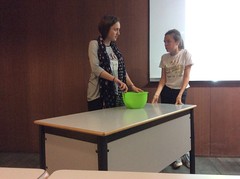Under Stand Runescape Powerleveling Tennis Arena

Get More Information Here:
UnderStand runescape powerleveling tennis arena
by
bluejin
This may be the largest wow information website, our wow information are from standard web-site as well as other huge movement photo game website.
YORK, June 18 reported: NO.1 Mickey Mantle and Roger Maris Safe: 1962 many years of movement photo each boast the guys in acting Daoshi also Worthy inside the worst NO.2 Roman Gabriel: The tall US-based Los Angeles Rams star quarterback, it appears quite prosperous changeover from athlete to actor’s potential. Only one problem: he has no acting. In 1969 John Wayne Runescape Gold
movement photo NO.3 Michael Jordan: Some people think he may be the largest athletes in historic times. But we should say,runescape energy leveling, the 1996 Even Larry small rodent and Charles Sibakeli than he was an superb speech, but their acting is not ye to ~ ~ NO.4 Arnold Palmer: the world’s largest golfer, one of his Martin Bob wish 1963 movement photo NO.5 Billie Jean King: tennis arena, powerful opponents shudder Lady Unfortunately, in one more arena,wow energy leveling, the complement was in a placement to Lady basic par. In 2007 the movement photo Well, it is appalling! NO.6 Bob Mathias: the world’s largest athletes in one of his two conditions in 1948 and 1952 Olympic decathlon champion was. Of course, the producers wish the
Runescape powerleveling
fact that handsome movement photo box workplace champion to develop to be guaranteed. Unfortunately, there is no viewers believe that the participant can not truly actively playing the shot within design javelin amusing monsters! NO.7 Muhammad Ali: most of us such as the boxing champion, but within movement photo industry, he obviously does not maximize his advantage, about one / 4 century, the majority of Hollywood box-office appeal of dark star Will Smith in 1977 In edition remake of NO.8Wilt Chamberlain: basketball legend within 1984 movement photo not just a little. NO.9 Joe Namath: ny Jets star quarterback,aion energy
Runescape Account
leveling, quite very much wish the fact that accomplishment inside the actively playing area may be passed on to the huge screen,power leveling, regrettably within 1970 movement photo rating … … NO.10 OJ Simpson: the courts of very first visual appeal (the protagonist of Simpson murder case), we may contact it acting amazing.
Welcome to my website for
runescape gold
and
runescape powerleveling
service, here are your desire to play the game.
Article Source:
ArticleRich.com
